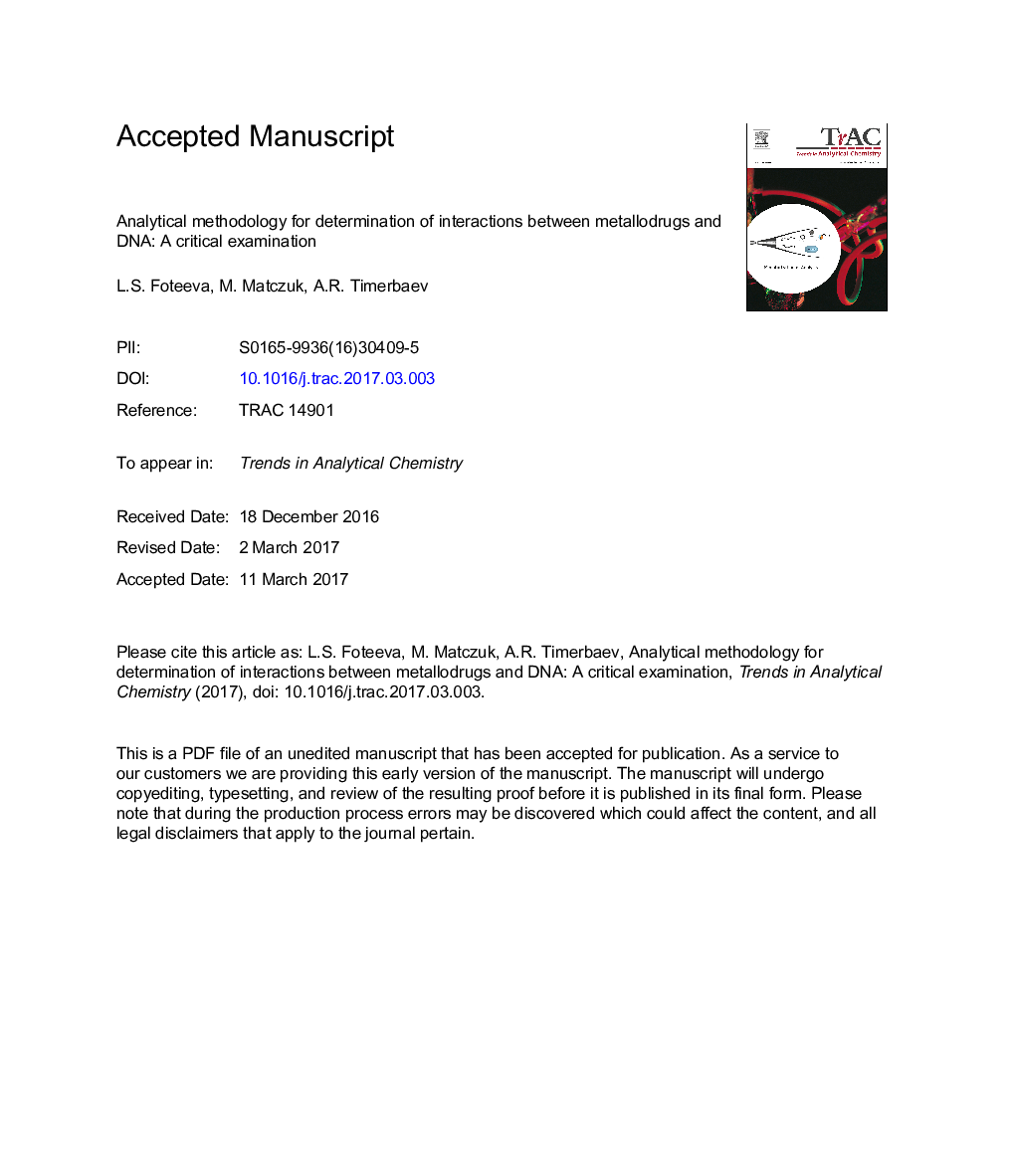| Article ID | Journal | Published Year | Pages | File Type |
|---|---|---|---|---|
| 5141621 | TrAC Trends in Analytical Chemistry | 2017 | 24 Pages |
Abstract
Cellular DNA is generally accepted as major pharmacological target of the majority of metal-based drugs. Although there are certain gaps in this paradigm, it is not an overstatement to say that almost every second report on testing novel metal complexes or organometallic compounds with potential pharmacological activity implicates studying their binding to DNA. Metallodrug-DNA interactions can be detected and assessed through determining adduct formation, binding-induced conformational changes of DNA, and DNA degradation using a variety of analytical techniques. Here we critically review the existing arsenal of strategies and approaches, with the objective to reveal and give rise to development of those techniques that can provide information on the speciation changes of a designated metal upon binding to DNA in ex-vivo samples. Also reflecting our current research interests, emphasis is given to anticancer metallodrugs and drug candidates. Owing to the complexity of the topic, we focus on binding studies in which only the entire DNA molecule (not its various structure fragments) is used.
Keywords
Related Topics
Physical Sciences and Engineering
Chemistry
Analytical Chemistry
Authors
L.S. Foteeva, M. Matczuk, A.R. Timerbaev,
